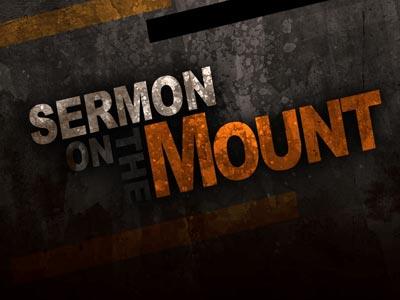-
Sermon On The Mount
Contributed by Jeffery Anselmi on Nov 28, 2017 (message contributor)
Summary: This is a introduction to a series on the Sermon on the Mount
INTRODUCTION
Talk about the Sermon on the Mount in relation to the Sermon on the Plain.
There are three predominate views concerning these sermons:
1. The versions are two different sermons.
Omissions. Different Purpose.
Luke states that the immediate purpose for writing was the instruction of Theophilus and his confirmation in the faith. Hence certain parts of the life and teaching of Jesus could be omitted without materially affecting his purpose.
Luke adds. Both giving condensed versions of what Jesus said.
Variations. Free report of the same sermon.
Could be two separate sermons, doesn’t change anything.
2. Matthew is a summary made from fragments of many like sermons such as the sermon on the plain.
a. The problem with this view is the fact that Matthew was written at least 10 years before Luke.
b. Clement of Alexandria said that the gospels containing the genealogies were written first. We date Matthew at A.D. 50 for his Greek version and 45 for his original Aramaic version.
c. Luke is dated at 60 A.D., Irenaeus said that Luke wrote down Paul’s preaching at the urging of the people. Irenaeus was a disciple of Polycarp who was a disciple of the apostle John.
3. The third view is the one which I will teach and it states that we have 2 accounts of the same sermon.
a. The sermons begin about the same, the substance is the same, and they both end with Jesus going to Capernaum where He heals the servant of the Centurion. (Matthew 8:5-13 and Luke 7:1-10)
Matthew 8:1-5 has Jesus healing and then going to Capernaum and healing the servant of the Centurion. Luke 7:1-2 has Jesus doing the same thing after the Sermon on the Plain.
If this is two sermons, is doesn’t present any problems since they are both so close in content.
SERMON
I. VARIOUS INTERPRETATIONS
A. How are we going to interpret this sermon? Which view is correct?
1. The Jewish view
a. What we call authentic Jesus is not materially different from what one would find in any Talmudic or other Jewish source.
b. In this view it was Paul, not Jesus who “changed” Christianity so that it no longer represented what Jesus taught, and therefore it was Paul who is responsible for the animosity currently seen between Judaism and Christianity.
2. The Lutheran interpretation.
a. The Lutheran theology teaches that the Law of Moses is still valid, and that its purpose is to define what sin is and to convict men they are sinners, and thus drive them to cry for the grace that is found in the Gospel.
b. Lutheranism interprets the Sermon on the Mount as an exposition of Law, designed to do this driving men to Christ.
c. One problem with this view is the fact that Hebrews and Galatians clearly show that the Law of Moses was never intended to be anything but temporary.
1. GALATIANS 3:24-25 Therefore the Law has become our tutor to lead us to Christ, that we may be justified by faith.
But now that faith has come, we are no longer under a tutor.
3. The Social Gospel View.
a. Classic liberalism thought of the Sermon on the Mount as a sort of moral road map toward social progress. To them, the Sermon was the only thing that still really matters in the New Testament. If men would just apply the principles found in the sermon, then we would produce the Kingdom on earth, war would end, and all of our troubles would end.
c. The problem with this view is the fact that the people who espouse this view usually ignore the Beatitudes , these simple statements show that man cannot live the Sermon on the Mount in and of himself, without the help of the Holy Spirit.
4. The Sermon just an elaboration of the Law of Moses.
a. Classic Protestantism has never distinguished between the Law and the Gospel, or Protestants will say that Jesus just explaining the real meaning of the Law as He delivers the sermon.
b. This view fails to take into account that in Matthew 5, Jesus completely sets aside the Old Testament Law, and gives His own teaching in its place.
5. The Anabaptist-Mennonite Tradition.
a. This view teaches that the ethical demands of the Sermon on the Mount apply to all believers in every age and every circumstance. In the Sermon on the Mount the this view finds pacifism.
b. The problem with this view is the fact that you must take all passages on a subject and examine them, rather than just one, if we are going to understand what the Bible says on a subject.
6. The Dispensational View.
a. Classic modern premillennialism interprets the whole Gospel of Matthew, not just the Sermon on the Mount, as Jesus’ instructions explaining how God’s people are to live during the Millennium. These instructions were never intended for the church, which never was predicted in the Old Testament, nor was even in the mind of God before the Jews (in an act unforeseen by God) rejected Jesus

 Sermon Central
Sermon Central



